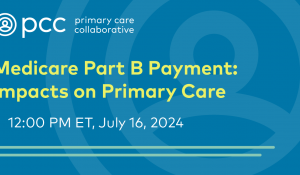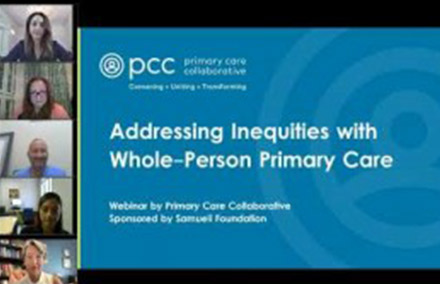Whole-Person Primary Care

Our health system must reorient away from fragmented care that exclusively treats disease; instead, the system—and especially primary care—must focus on improving overall health and well-being, driven by patients’ needs, preferences, and social context. Whole-person health promotes individuals’ wellbeing inclusive of their physical, mental, emotional, and social needs. It is a care model that is person-centered, relationship-based, and recovery-focused.
Treating beyond 20%
Health care today usually only addresses a small portion—one fifth—of what influences a person’s health. The rest comes from behavior and lifestyle choices and the social and economic environment in which they live. Our system must do better to address this remaining 80% if we want to fundamentally improve health.
This approach to primary care integrates conventional medicine with healthy lifestyle promotion, evidence-based complementary approaches and self-care to holistically address an individual’s health. It promotes better health both through conventional means, such as taking medications to treat disease and surgical interventions, and complementary approaches, such as managing stress and sleep, coaching around nutrition, and practices like yoga and acupuncture.
Today, the idea of treating the whole person is not radical—it’s well-accepted as a ‘must’. In its recent consensus study report on primary care, the National Academies of Sciences, Engineering, and Medicine updated its definition of high-quality primary care to explicitly emphasize “the provision of whole-person, integrated health care by interprofessional teams.”
An evidence base exists
A multitude of non-drug approaches have decades of research behind them. This includes a strong evidence base on the benefits of promoting healthy behaviors through lifestyle medicine as well as research backing complementary health approaches, including studies funded by the National Center for Complementary and Integrative Health at the NIH.
The report goes on to call for comprehensive care that accounts for mental, physical, emotional, and spiritual health and “facilitates care across different professionals, facilities, and support systems.”
What can a practice do to reorient towards whole health?
Start with even small changes. This might include expanding your care team to include health-and-wellbeing coaches; implementing the HOPE Note (Health Oriented Practice and Environments Assessment) to elevate patients’ voices and understand what matters to them; and offering a wider variety of treatments—including referrals to acupuncture, yoga, and community-based social supports.
The best primary care is delivered by a diverse, integrated care team focused on patient wellbeing. This team should be transdisciplinary and include professionals such as dieticians, health coaches, and mental health providers.
How do we pay for this?
In many ways, we already do. Today, trillions of dollars are funneled into the health care system, but only to pay for care that is often specialized, fragmented and focused on the acute. Up to a third of it is wasted on unnecessary care or paperwork. Elevating advanced primary care that treats the whole person can be paid for when we shift payment away from volume towards value.
Equity and whole-person health:
True advanced primary care means bettering health for ALL people—not just those with means and access. Integrative approaches that care for the whole person account for a patient’s social and environmental context. It recognizes, and acts on, a person’s social needs (housing, food, safety) as well as the structural determinants (income, language, racial bias, etc.) that underly them. Learn more about how whole-person primary care can address inequities.
Secondary menu
Copyright © 2024 Primary Care Collaborative








